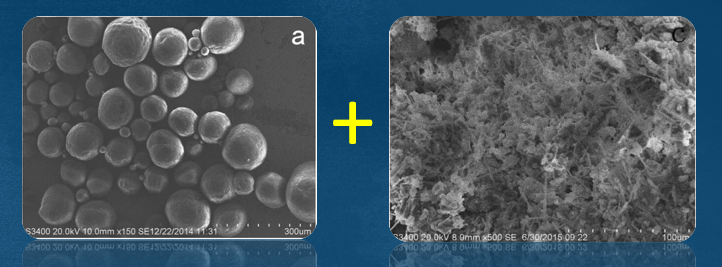Phase-change humidity control materials

Buildings account for about 40% of the world's total energy consumption, and more than 50% of the primary energy consumed in buildings is for the heating and air-conditioning system. In order to ensure adequate supplies of energy and to curtail the growth of CO2 emissions, it’s essential to improve the building energy efficiency and reduce the energy consumption of HVAC systems. One way this can be achieved is through the introduction of innovative passive building materials that can regulate both the indoor temperature and humidity, and maintain the indoor environment at a stable and comfort level.
The loads of HVAC system consist of sensible load and latent load. Previous studies of passive materials mainly focus on one individual load (either sensible or latent load). For the sensible heat transfer, materials with large specific heat capacity was proposed. For example, phase change materials (PCM) can absorb or release large amount of thermal heat, and the temperature of the materials maintain constant in phase change process. So PCMs can be used to regulate indoor temperature fluctuations and cut down the sensible energy consumption. For the latent heat (moisture) transfer, porous materials with high adsorption ability was recommended. These hygroscopic materials can absorb or release large account of moisture from indoor air, and can be used to moderate the indoor relative humidity fluctuations. However, heat and moisture transfers in building are highly coupled; and do exert an effect on each other.
The main purpose of the study is to develop a new kind of passive Phase Change Humidity Control Material (PCHCM), which can moderate both the indoor temperature and moisture fluctuations, and eventually reduce both sensible and latent loads.
Selected publications on this topic.
- Z. Wu, M. QIN*, M. Zhang, Phase change humidity control material and its impact on building energy consumption. Energy and Buildings, Vol. 174, 2018.
- Z. Chen and M. QIN*, Preparation and hygrothermal properties of composite phase change humidity control materials, Applied Thermal Engineering, Vol. 98, 2016.
- Z. Chen, M. QIN* and J. Yang, Synthesis and Characteristics of Hygroscopic Phase Change Material: Composite Microencapsulated Phase Change Material (MPCM) and Diatomite, Energy and Buildings, Vol.106, 2015.
- Z. Chen, M. QIN and G. Fang, Preparation and characteristics of composite phase change material (CPCM) with SiO2 and diatomite as endothermal-hydroscopic material, Energy and Buildings, Vol.16, 2015.